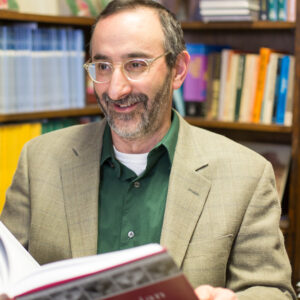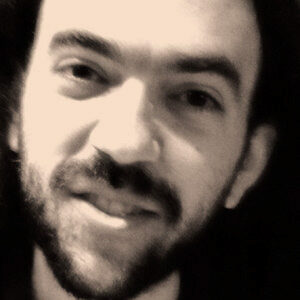Search Results
Back to JTS Torah Online's Main page
Charting a Way Back
Apr 12, 2024 By Ayelet Cohen | Commentary | Tazria
The book of Vayikra can be understood as an exercise in transition; if one imagines the Torah as the lifecycle trajectory of Israel, this The book of Vayikra can be understood as an exercise in transition; if one imagines the Torah as the lifecycle trajectory of Israel, this book represents adolescence/early adulthood. The Israelites are still transitioning from being an enslaved people toward becoming a free people. With their newfound autonomy, they must learn responsibility to one another and service to God. They struggle with faith, patience, ethical behavior, interpersonal relationships, and boundaries—in short, all of the things that are hard about maturation and adulthood. book represents adolescence/early adulthood. The Israelites are still transitioning from being an enslaved people toward becoming a free people. With their newfound autonomy, they must learn responsibility to one another and service to God. They struggle with faith, patience, ethical behavior, interpersonal relationships, and boundaries—in short, all of the things that are hard about maturation and adulthood.
Read More
It Passes and We Stay
Apr 21, 2023 By Jan Uhrbach | Commentary | Metzora | Shabbat Rosh Hodesh | Tazria
The double parashiyot of Tazria and Metzora are devoted in their entireties to the Biblical notion of tumah, usually translated as “impurity.” In them, we learn three of the major sources of tumah: childbirth (Lev. 12); a condition known as tzara’at, which can manifest on skin, clothing, or the walls of one’s house (Lev. 13–14); and bodily secretions (Lev. 15). The two other primary sources of tumah are touching or carrying the carcasses of certain animals (Lev. 11) and contact with a human corpse (Num. 19).
But what is the essential nature of tumah, and what does it have to do with Emily Dickinson’s poem?
Read More
Here I Am, Tzara’at and All
Apr 1, 2022 By Rachel Rosenthal | Commentary | Shabbat Hahodesh | Tazria
When I was 12, a few weeks before my bat mitzvah I went in to meet with one of the rabbis of my synagogue. At the time, the synagogue newsletter included a “pasuk of the week,” a verse from that week’s Torah portion that was particularly interesting or thought provoking. However, as the rabbi confessed to […]
Read More
The Values of a Jewish Home
Apr 16, 2021 By Matthew Berkowitz | Commentary | Metzora | Tazria | Yom Hazikaron-Yom Ha'atzma'ut
In the precious days “Before the Coronavirus Era” (B.C.E.), the parshiyot of Tazria-Metzora seemed wholly disconnected from our lives, presenting the perennial challenge of relevance (or irrelevance) to even the most talented darshan (sermonizer). How are we to connect leprous plagues attacking both body and abode to our daily lives? And to what extent does the experience of quarantine resonate with our modern reality? These are only two of the many questions that we would have posed in a pre-Covid world.
Living Outside the Camp
Apr 24, 2020 By | Commentary | Metzora | Tazria
For many of us, the Torah portions of Tazria and Metzora have never felt so relevant. While in years past there was a great sense of distance from the confusing descriptions of biblical skin afflictions, the quarantine of afflicted Israelites, and the complex post-illness purification process, it feels difficult to escape their prescience during our current global pandemic. As we all struggle with the challenges of social distancing and the uncertainty of the future, I believe that insights into the details of our parshiyot can provide us with points of reflection for our present reality.
Read More
How to Approach God
Apr 5, 2019 By Benjamin D. Sommer | Commentary | Tazria
There are probably no Torah readings as widely misunderstood as the Torah readings for this week and next week, Parashat Tazria and Parashat Metzora. These parshiyot are devoted entirely to the subject of ritual purity. They discuss what causes people to become ritually impure, how they can become ritually pure again, and what the effects of this state are. For many modern readers, this topic is off-putting. It seems primitive and far removed from the real concerns of an ethical and monotheistic religion.
And yet to the authors of the Bible, these laws were of paramount importance. They were seamlessly intertwined with the idea of monotheism.
Read More
It Passes and We Stay
Apr 20, 2018 By Jan Uhrbach | Commentary | Metzora | Tazria
A Light exists in Spring
Not present on the Year
At any other period—
When March is scarcely here
The double parashiyot of Tazria and Metzora are devoted in their entireties to the Biblical notion of tumah, usually translated as “impurity.” In them, we learn three of the major sources of tumah: childbirth (Lev. 12); a condition known as tzara’at, which can manifest on skin, clothing, or the walls of one’s house (Lev. 13–14); and bodily secretions (Lev. 15). The two other primary sources of tumah are touching or carrying the carcasses of certain animals (Lev. 11) and contact with a human corpse (Num. 19).
Read More
Gender Inside and Outside the Camp
Apr 28, 2017 By Joy Ladin | Commentary | Metzora | Tazria
The idea that others would examine and report on intimate details of our bodies—that such things would be of communal concern, and subject us to institutional regulation—may seem archaic. But as transgender people know, when it comes to gender, this kind of surveillance is alive and well.
Read More
Guarding Our Tongues
Apr 28, 2017 By Abigail Uhrman | Commentary | Metzora | Tazria
Becoming is better than being.
—Carol Dweck, Mindset: The New Psychology of Success
This week’s parashah discusses tzara’at, a skin disease understood in rabbinic tradition as punishment for lashon hara, evil speech. The public castigation that the metzora suffers is a powerful warning for us to “guard our tongues.” It was with words that God created the world, and our words have potential to build, create, and sustain life and human dignity, or to be a source of pain and destruction.
Read More
Here I Am, Tzara’at and All
Apr 8, 2016 By Rachel Rosenthal | Commentary | Tazria
When I was 12, a few weeks before my bat mitzvah I went in to meet with one of the rabbis of my synagogue. At the time, the synagogue newsletter included a “pasuk of the week,” a verse from that week’s Torah portion that was particularly interesting or thought provoking. However, as the rabbi confessed to me, the week of my bat mitzvah was to be the end of that custom. He just couldn’t find anything that fit the bill. That week’s parashah? Tazria.
Read More
Keep Calm and Consult a Priest
Apr 8, 2016 By Hillel Gruenberg | Commentary | Tazria
Tazria begins with a discussion of the ritual purity of a woman following childbirth and goes on to relate the treatment of leprosy. Reflecting on this juxtaposition of topics, my thoughts turned to the Zika virus, which has garnered global attention because of evidence it may cause birth defects in the children of mothers infected while pregnant.
Read More
Outside the Camp
Apr 24, 2015 By Julia Andelman | Commentary | Metzora | Tazria
The double parashah of Tazria-Metzora ranks at the top of the list of parshiyot to avoid for a bar or bat mitzvah. Its detailed lists of bodily ailments—rashes, colorations, emissions, and secretions—associated with ritual impurity are not the stuff of religious inspiration in contemporary times. I confess to having once colluded with congregants to subtly move the date of their daughter’s bat mitzvah celebration slightly further away from her Hebrew birthday, in order to provide her with a more palatable Torah reading to chant and speak about than Tazria-Metzora. But this year—the year of #BlackLivesMatter—has caused me to read Tazria-Metzora through a new and painfully relevant lens.
Read More
Deeper Than the Skin
Apr 24, 2015 By Yitzhak Lewis | Commentary | Metzora | Tazria
Your body is a map of roads
To be taken,
And not taken
Alone.
Your skin enfolds what
Your eyes shut behind them,
All your past is bored into it
Every day with the awl of time.

Parashat Tazria and Circumcision
Mar 26, 2014 By Matthew Berkowitz | Commentary | Tazria
Parashat Tazria, at the heart of the book of Leviticus, presents a challenge of almost epic proportions in the search for modern, practical relevance.
Read More
Land, Language, and Leprosy
Apr 10, 2013 By Matthew Berkowitz | Commentary | Metzora | Tazria
The second of this week’s parashiyot, Metzora, is an enigma on so many levels.
Read More
The Torah’s Prescription for Healing
Apr 9, 2013 By Alan Cooper | Commentary | Metzora | Tazria
At a glance, the opening chapters of Parashat Metzora seem like a biblical antecedent of WebMD. Leviticus 13 describes the disfiguring symptoms of צרעת/tzara`at, starting with “a swelling, a rash, or a discoloration” that “develops into a scaly affection” (Lev. 13:1).
Read More
Authentic Judaism
Apr 28, 2012 By Andrew Shugerman | Commentary | Text Study | Metzora | Tazria
Many modern Jews have declared the opening verses of this week’s Torah portion not just arcane, but misogynist. Indeed, the laws regarding postpartum impurity emerge from a priestly world of sacrifices and distinctions that seems distant today. Our ancient Sages, however, radically reinterpreted that passage and the creation of humanity in Genesis with playful translations that provide an opening for insights into the origins of gender.
Read More
Between Tum’ah and Tohorah
Apr 2, 2011 By Marc Wolf | Commentary | Shabbat Hahodesh | Tazria
It seems more than kismet that Passover falls when it does, following on the heels of the parashiyot of Leviticus in which we discuss the most base of subjects. In fact, rabbis and commentators through the ages have found the laws of tum’ah and tohorah (ritual impurity and purity) covered in these weeks before Passover so unsettling that, presumably in reaction, they have enthusiastically embraced the following statement from the Talmud: “Questions are asked and lectures are given on the laws of Passover beginning thirty days before” (BT Pesachim 6a). Surely, this is an avoidance tactic on the part of rabbis, but maybe it is also for the sake of the community—to save them from many discussions that would make them lose their appetites for the kiddush that follows services.
Read More
Birth, Both Spiritual and Physical
Apr 2, 2011 By Andrew Shugerman | Commentary | Text Study | Tazria
How can men understand something like pregnancy, which is so fundamentally foreign to the male experience? As contemporary Jews, we often raise questions about how our classical sources, compiled by men, portray “the other,” in this case, child-bearing women. We find in the midrash above an ancient rabbi’s attempt to understand childbirth, the opening subject of this week’s Torah portion, and identify men’s role in it.
Read More
Healing of Body and Mind
Apr 16, 2010 By Arnold M. Eisen | Commentary | Metzora | Tazria
The Baal Shem Tov, seeking the sort of symbolic meaning in this week’s section of Leviticus that we too search out, found the laws of scaling and scalding, bodily discharge, and fungus in the warp and woof of fabric suggestive of the need for repentance and humility.
Read More
SUBSCRIBE TO TORAH FROM JTS
Our regular commentaries and videos are a great way to stay intellectually and spiritually engaged with Jewish thought and wisdom.




